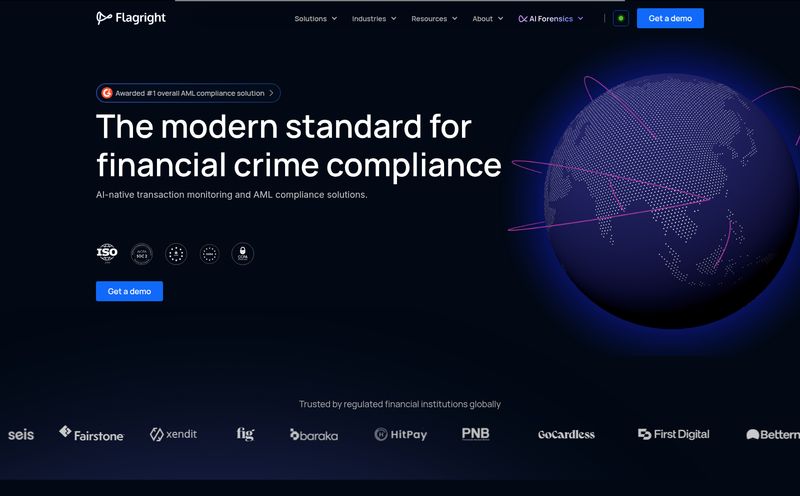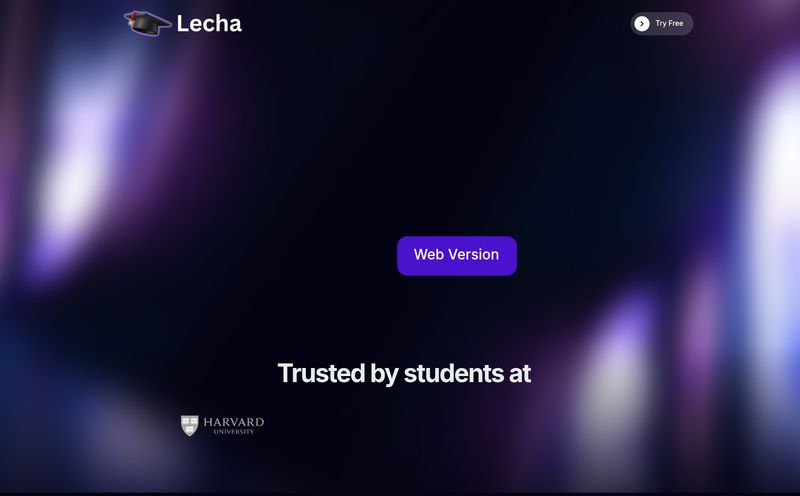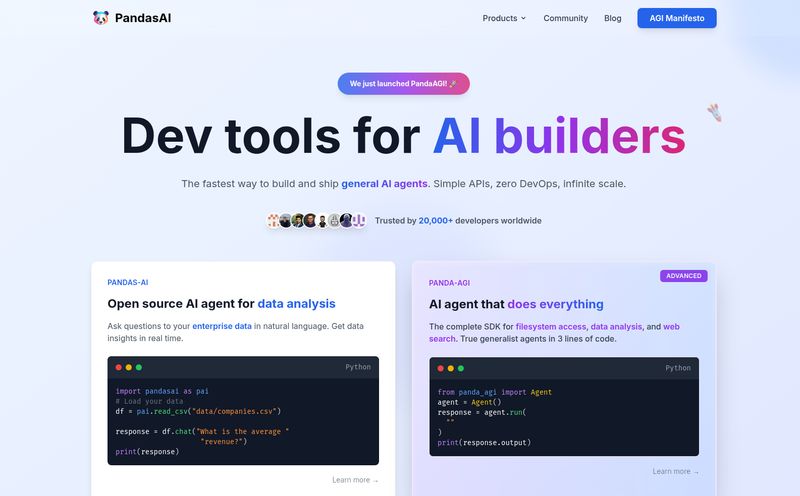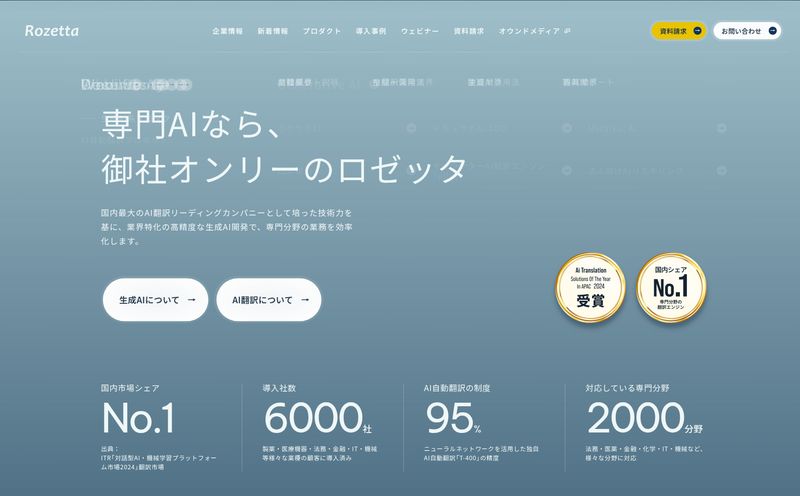How many browser tabs do you have open right now? If you're anything like me, the answer is somewhere between 'a respectable amount' and 'enough to make my laptop fan cry for mercy'. We consume so much information—articles, Twitter threads, YouTube tutorials, research papers—but how much of it actually sticks?
For years, my system was a chaotic mess of bookmarks I never revisited, screenshots lost in a forgotten folder, and random notes in a dozen different apps. It felt like I was pouring knowledge into a digital sieve. I’d find a brilliant quote or a game-changing statistic, and poof, it was gone, lost to the abyss of my browser history.
Then I stumbled upon Glasp. On the surface, it looks like just another web highlighter. But trust me, it’s so much more. It’s less of a tool and more of a philosophy for learning, one that’s built for the way we actually use the internet today. It's become a cornerstone of how I manage my professional research and my personal curiosities.
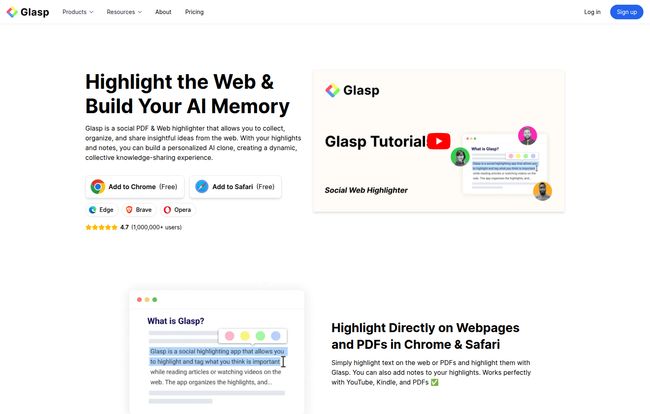
Visit Glasp
So, What is Glasp, Really?
Calling Glasp a “social web highlighter” is technically correct, but it’s like calling a smartphone a “pocket calculator with a phone.” It misses the point. Think of it as a bridge between consumption and creation. You highlight text on any webpage or PDF, add a note, and it’s saved to your Glasp profile. Simple. But here’s where the magic happens.
Your highlights don't just sit there. They become part of a living, breathing knowledge base. It’s a way to build what a lot of people in the productivity space call a “second brain”—a digital extension of your own memory. And because it's social, you can see what other smart people are highlighting, creating this amazing, serendipitous discovery engine. I've found some of my favorite articles just by browsing the Glasp feeds of other marketers and writers.
The Glasp Features That Genuinely Impress Me
Highlighting is the bread and butter, but the other features are the real secret sauce. Some of these have completely changed my workflow.
The Social Layer is Smarter Than You Think
At first, I was skeptical about the “social” aspect. I mean, do I really want to see what random people are highlighting? The answer, it turns out, is a resounding yes. When you follow people in your field, your Glasp homepage becomes a curated feed of insights. It’s like having a team of researchers finding the best bits of the internet for you. It’s the opposite of the mindless scrolling we do on other platforms; this feels like productive, collective learning. They really lean into their motto, “Learn in Public Together.”
An AI Assistant That Actually Saves Time
Okay, let's talk about the AI. It's everywhere now, but Glasp uses it in a genuinely helpful way. Their YouTube summarizer is a lifesaver. You can get a full transcript or a concise summary of a long video, complete with timestamps. I use it to quickly vet if a 45-minute tutorial is worth my time or to grab key points from a conference talk I missed. It works with articles and PDFs, too. This isn't just a gimmick; it’s a powerful tool for triaging information.
Build Your Own AI Clone. Seriously.
This is the feature that feels like it’s straight out of science fiction. Glasp can create a personal AI chatbot for you, trained exclusively on your highlights and notes. Let that sink in. You can literally ask your own knowledge base questions. Forgetting the name of that marketing framework you highlighted last month? Just ask your Glasp AI. It’s like having a conversation with your own second brain. It’s still evolving, but the potential here is just... wow.
It Plays Nicely with Your Other Tools
A tool is only as good as its integrations, right? This is where Glasp really shines for productivity nerds. It seamlessly exports your highlights to the big players in knowledge management: Notion, Obsidian, Roam Research, and Readwise. My workflow involves highlighting with Glasp and then having everything automatically synced to my Notion database. It removes all the friction of manual copy-pasting and lets me focus on connecting ideas.
Let's Talk Money: Glasp's Pricing Plans
Alright, the all-important question: what’s this going to cost? Glasp has a pretty generous free plan, which is a great place to start. But the paid plans are where the real power is. Here's a quick breakdown:
| Plan | Price | Who It's For |
|---|---|---|
| Free | $0/month | The casual user. You get unlimited public highlights and a limited number of AI summaries. Perfect for trying it out and seeing if you like the social features. |
| Pro (Yearly) | $10/month | The serious learner. This is the plan I use. It unlocks unlimited private highlights (a must-have for me), way more AI summaries, and the daily auto-sync to Notion. Worth every penny. |
| Unlimited (Yearly) | $25/month | The power user or small team. You get massive quotas for everything, unlimited PDF uploads, and priority support. If you live and breathe online research, this is your tier. |
The Not-So-Perfect Parts
No tool is perfect, and it would be dishonest to pretend Glasp is. There are a couple of things to keep in mind. First, it’s built around a browser extension. If you're someone who hates adding things to your browser, this might not be for you. They do have an Android app, which is a nice touch, but the core experience is on desktop.
Second, the privacy aspect of the free plan is a consideration. All your highlights are public by default. While this is great for the community aspect, you might not want to broadcast your research on a sensitive work project. For me, this was the main reason to upgrade to the Pro plan for private highlights. It's a fair trade-off, but one you should be aware of from the start.
The Final Word: Is Glasp Your Next Must-Have Tool?
After months of use, Glasp has earned a permanent spot in my digital toolkit. It solved a problem I barely knew how to articulate: how to actively engage with online content instead of just passively consuming it. It has successfully stopped the digital sieve effect.
If you’re a student, writer, researcher, content creator, or just a curious person who wants to remember more of what you learn, I honestly think you should give it a shot. Start with the free plan, follow a few interesting people, and see how it feels. You might just find that your brain suddenly has a lot more space to think when you're not trying to use it as a storage device.
Frequently Asked Questions
- Can I use Glasp on my phone?
- Yes! While the main experience is through the Chrome and Firefox browser extensions, Glasp also offers an Android app for highlighting on the go.
- Are my highlights private or public?
- On the Free plan, all your highlights are public to contribute to the social learning community. The paid Pro and Unlimited plans give you the option to make your highlights private, which is great for work or personal research.
- How is Glasp different from Pocket or Instapaper?
- Think of it as active vs. passive. Tools like Pocket are for saving articles to read later. Glasp is for actively engaging with content you are reading now by highlighting, annotating, and connecting ideas. The social and AI layers are also major differentiators.
- What AI models does Glasp use for summaries?
- According to their site, the YouTube summary feature uses a variety of advanced models, including those from OpenAI (like ChatGPT) and Anthropic (Claude). This allows for high-quality, nuanced summaries.
- Do I have to use the social features?
- Not at all! If you're on a paid plan with private highlights, you can use Glasp as a purely personal knowledge-capture tool and still benefit from the AI features and integrations with apps like Notion.
